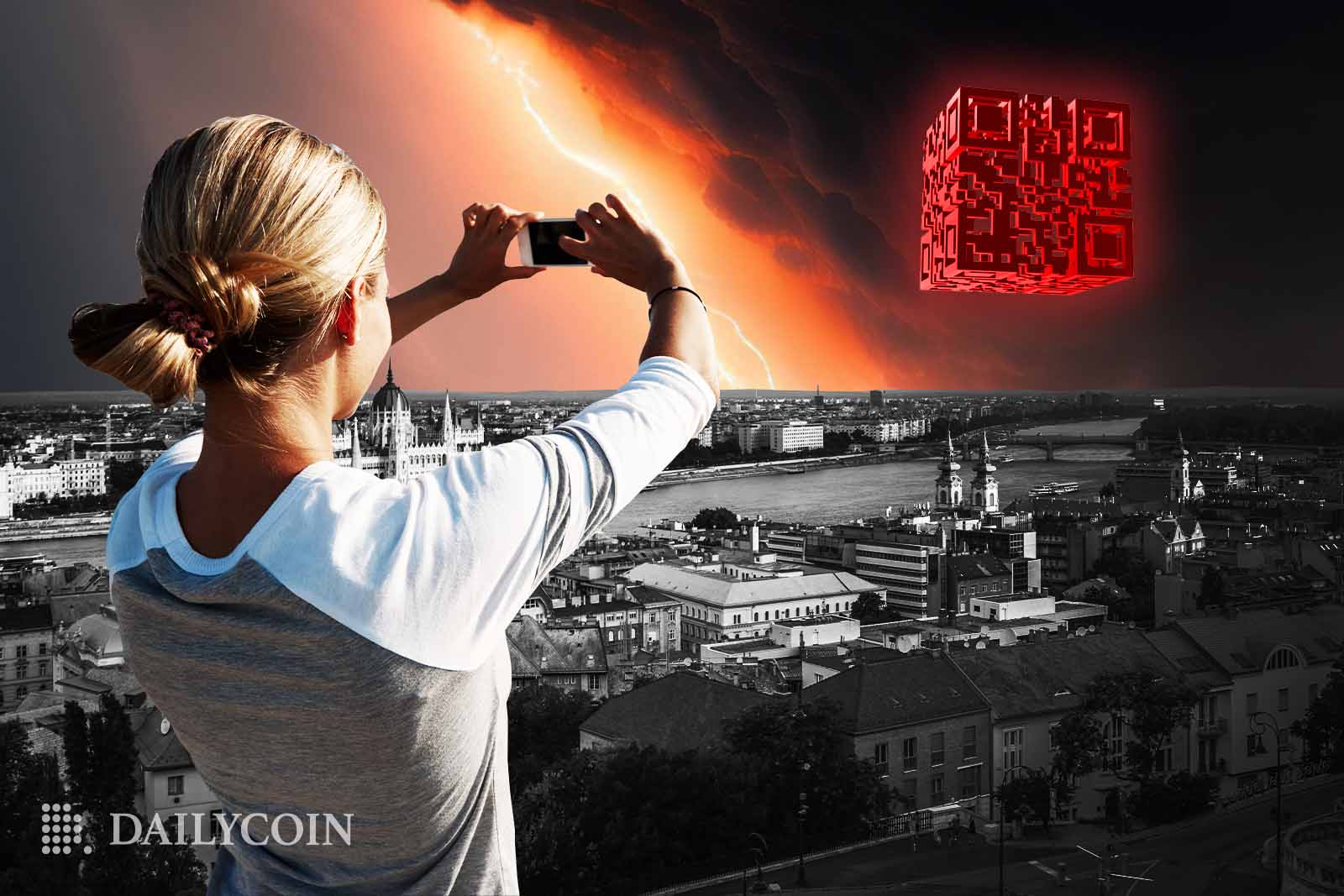
Limit Break, an upcoming Web3 gaming company, recently aired a QR code ad during the first commercial break of the Super Bowl. The company planned to give away tens of thousands of free-to-own NFTs from its DigiDaigaku Dragon series.
The Super Bowl ad displayed a QR code that viewers could scan to claim a DigiDaigaku Dragon Egg NFT. The million-dollar Super Bowl commercial drew scalpers and scammers, exploiting this short-lived popularity.
Some scalped the free NFT for hundreds of dollars, and others put up phishing sites impersonating the DigiDaigaku website to scam the innocent. After what happened to FTX and the other Web3 companies that aired commercials, many remained hesitant to buy ad space at the Super Bowl.
Sponsored
However, with DigiDaigaku being the only crypto-related ad aired, crypto companies couldn’t be happier that it wasn’t them that stirred controversy this time.
If you missed our Commercial during The Big Game
— DigiDaigaku (@DigiDaigaku) February 13, 2023
Here’s another chance to view it!
INSTRUCTIONS:
✅RETWEET THIS TWEET
✅LIKE THIS TWEET
✅FOLLOW ME pic.twitter.com/1VWrgCyPrn
Is There Such a Thing as Bad Publicity?
2022 saw numerous crypto firms spending millions of dollars on Super Bowl ads. The companies spent an estimated $54 million to air commercials at America’s most-watched sports event. Unsurprisingly, many dubbed last year’s Super Bowl the ‘Crypto Bowl.’
However, following the FTX collapse, an exchange that essentially led the crypto drive in the country, many crypto companies put their foot on the ground and stayed away from controversy.
Sponsored
A Fox Sports executive vice president of ad sales told the Associate Press that four crypto firms were close to booking commercials at this Super Bowl; however, the negotiations fell apart following the FTX debacle.
Interestingly, every crypto company that ran Super Bowl ads last year has incurred significant losses.
However, despite the hesitancy from other Web3 companies, Limit Break followed through on their deal and became the only crypto-related ad at game night. They shared that they paid $6.5 million for the QR Code Super Bowl ad.
The ad prompted users to scan a ‘persistent’ QR code to claim a free NFT for its anime-inspired game project, DigiDaigaku.
While a few thousand were lucky enough to get their hands on the NFT, the QR code redirected many to the Twitter profile of the CEO, Gabriel Leydon, who had also tweeted out a mint link before the ad aired.
The ad was effective in putting the spotlight on DigiDaigaku, stirring controversy. And with controversy being a magnet for publicity, the company did not fall short in capturing everyone’s attention, including critics, scammers, and scalpers.
DigiDaigaku paid $6.5M for a Super Bowl ad that looked like an ad for a Youtube mobile game that linked directly to the CEO's Twitter page. pic.twitter.com/wLavvvtphG
— HashBastards NFTs 🤑 (@HashBastardsNFT) February 13, 2023
When Life Gives You NFTs, Scam or Scalp
Many users were unhappy with the CEO tweeting a mint link before the QR code commercial aired, criticizing Leydon for ‘farming impressions’ and ‘rug-pulling TV viewers.’ Some even claimed the minting process wasn’t easy for newcomers, requiring Ethereum wallets to claim the NFTs.
The sudden surge in engagement for DigiDaigaku drew scalpers and scammers looking for a quick hunt. With hundreds of thousands of users sharing concerns on Twitter, malicious actors took it upon themselves to take advantage of the situation.
Many scalpers put up the NFTs for sale on the secondary market. According to data from OpenSea, each NFT from the proposed 10,000-unit collection had a floor price of 0.31 ETH or $465 at press time.
OpenSea’s data suggests the trading volume for the collection soared as high as 1,133 ETH or $1.7 million.
DID YOU MISS OUR FREE DIGITAL COLLECTIBLE? 🐉
— Gabriel Leydon (FREE,OWN) (@gabrielleydon) February 12, 2023
HERE’S YOUR LAST CHANCE TO WIN A @DigiDaigaku FREE DIGITAL COLLECTIBLE NOW!
INSTRUCTIONS:
✅RETWEET THIS TWEET
✅LIKE THIS TWEET
✅FOLLOW ME pic.twitter.com/cplc7hMKjC
LimitBreak’s CEO couldn’t help himself from taking advantage of the spotlight and FOMO-ing users into registering via the DigiDaigaku website for a ‘second chance’ at minting an additional 5,000 NFTs.
While it is unclear if the additional NFTs were part of the original 10,000, the CEO’s tweet resulted in scammers launching phishing websites impersonating DigiDaigaku.
However, Crypto Twitter’s valiant pen-testers were quick to point out the numerous phishing URLs that scammers put up, saving users from potential theft.
On the Flipside
- The DigiDaigaku Super Bowl Ad is Gabriel Leydon’s third commercial at the mega event. The Limit Break Founder previously ran Super Bowl ads for Game of War: Fire Age and Mobile Strike as CEO of Machine Zone.
- The cheapest Dragon Eggs NFT is listed for 0.2629 ETH or approximately $395 on OpenSea.
- Coinbase’s Super Bowl LVI (2022) commercial featured a bouncing QR code that led to the exchange’s app crashing.
Why You Should Care
The Super Bowl is undoubtedly one of the biggest sports events in America, airing to over 100 million viewers. While cryptocurrencies had their fair share of crashes, controversies, and contagions, the metaverse sector stayed resilient.
Despite being dubbed as one of the worst crypto winters, 2022 was an excellent year for Web3 gaming, which is why DigiDaigaku successfully garnered attention with its ad. However, the industry’s success could attract malicious actors to exploit innocent users looking to play a game or mint an NFT.
The controversy surrounding this ad certainly reinstated the importance of due diligence.
Read about Crypto ads at the Superbowl:
Flashback to 2022’s Super Bowl Crypto Ads: Touchdowns and Fumbles?
